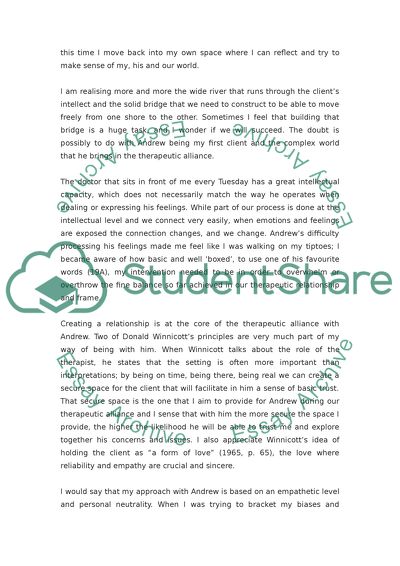Cite this document
(Description of Therapy Process Assignment Example | Topics and Well Written Essays - 1500 words, n.d.)
Description of Therapy Process Assignment Example | Topics and Well Written Essays - 1500 words. Retrieved from https://studentshare.org/psychology/1610239-process-report
Description of Therapy Process Assignment Example | Topics and Well Written Essays - 1500 words. Retrieved from https://studentshare.org/psychology/1610239-process-report
(Description of Therapy Process Assignment Example | Topics and Well Written Essays - 1500 Words)
Description of Therapy Process Assignment Example | Topics and Well Written Essays - 1500 Words. https://studentshare.org/psychology/1610239-process-report.
Description of Therapy Process Assignment Example | Topics and Well Written Essays - 1500 Words. https://studentshare.org/psychology/1610239-process-report.
“Description of Therapy Process Assignment Example | Topics and Well Written Essays - 1500 Words”, n.d. https://studentshare.org/psychology/1610239-process-report.


